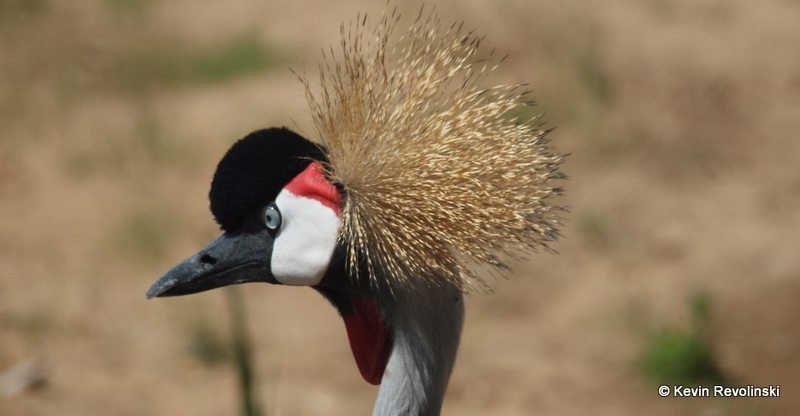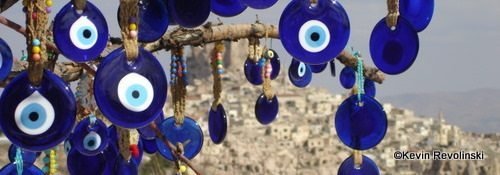Birds of a Feather: The International Crane Foundation
 I’m sitting alone with a very rare creature. His feathers glow glaring white in the mid-day sun and he wades through his own private pool atop spindly legs. His long slender neck bends toward me with grace as he sees me in the shade.
I’m sitting alone with a very rare creature. His feathers glow glaring white in the mid-day sun and he wades through his own private pool atop spindly legs. His long slender neck bends toward me with grace as he sees me in the shade.
I snap a photo and a moment later, without warning, this Whooping Crane — intentionally made flightless for his own safety — begins flapping his wings and takes off high-stepping across the small pond, an explosion of feathers and splashing water. As he reaches the other side, the bird climbs onto land and circles back on an awkward run in the other direction to do it again, like an excited child leaving the pool and racing around to the diving board for another plunge. The crane makes the loop several times and stops as suddenly as he started.
Getting to see the elegant and sometimes eccentric cranes up close is one of the greatest pleasures of a visit to the 225-acre home of the International Crane Foundation (ICF) just off I-94 not far from Wisconsin Dells. The ICF is like the United Nations of cranes: a member of each of the world’s 15 species is represented, including the Sarus Crane, the tallest flying bird in the world, and the Whooping Crane, which I’ve just seen in action, one of the world’s most endangered bird species.
The Whooping Cranes, whose numbers in the wild fell to 21 in the 1940s, have had the nicest digs, a spacious wetland exhibit complete with a viewing/lecture pavilion and a repeating video outside the door. In June of this year, however, four new expanded habitats were opened for the four resident African species of cranes.
Cranes may charge intruders and that long pointed beak isn’t just for show. Nervous that I had somehow upset the Whooping Crane’s territorial senses, I asked Jeanne Swanson, a volunteer guide about the behavior. “No, just sounds like he was stretching his wings a bit.”
Crane City
Though the birds on exhibit can never be released back into the wild, the ICF is not just a zoo. In 1973, co-founders Ron Sauey and George Archibald felt the best weapon against extinction for the various endangered species was a captive breeding program coupled with reintroduction to the wild.
Mounted binoculars on a viewing platform along the center’s path allow a peek into Crane City, the breeding area at the back of the property which is closed to the public. The ICF is one of the founders of the Whooping Crane Eastern Partnership (WCEP), a rescue program which has had success returning Whooping Cranes to the wild. Since cranes in captivity no longer migrate and thus cannot teach young to do so, humans had to take on the job in an attempt to restore the wild population. This meant researchers, in what look like white haz-mat suits with crane puppets for one sleeve, had to take young cranes and train them to follow an ultralight plane south for the winter. The disguises prevent cranes from imprinting on humans as their parents.
 Visitors can have a look at the training activity via a closed-circuit camera which can be controlled from inside the Gaylord and Dorothy Donnelley Family Education Center. Other interactive displays there engage visitors: Stretch your arms to see how your wings compare to the cranes’; see a bird’s skeleton; trace migration routes around the world; and learn more about the international efforts to save cranes and their habitat.
Visitors can have a look at the training activity via a closed-circuit camera which can be controlled from inside the Gaylord and Dorothy Donnelley Family Education Center. Other interactive displays there engage visitors: Stretch your arms to see how your wings compare to the cranes’; see a bird’s skeleton; trace migration routes around the world; and learn more about the international efforts to save cranes and their habitat.
Shall We Dance?
Cranes are famous for their mating dances. In fact, ICF co-founder George Archibald once found he had to do the dance himself for their first female Whooping Crane. Tex, who had become so accustomed to humans that she no longer ovulated at the performance done by fellow cranes, expected a human to impress her. Artificial insemination simply wouldn’t work without the preamble of the courtship dance, and only Archibald’s efforts made the ICF’s first Whooping Crane hatchling possible. In the spring of the year visitors may learn a few moves themselves from watching the cranes.
Loss of habitat is one of the cranes’ biggest threats and the ICF has over 100 acres of restored oak savanna, prairie, and wetlands with hiking trails for visitors. But in the end most will come primarily to marvel at the birds.

Several visitors line up at the corner of a pen to check out a Grey Crowned Crane with its spiky punk-rock hairstyle. The bird takes its turn gawking from the other side of a plastic sheet along the fence which prevents it from going after curious fingers. Some of the cranes have tracheas close to five feet long and the resonating ratchety calls stop visitors along the paths to listen.
The newer Spirit of Africa exhibits have gone “green,” featuring solar-powered systems for heat and electricity and pavement made from recycled glass. The enclosures provide wider, more authentic spaces, as well as educational signage which provides more information about issues such as wetlands loss in Africa and  the significance not just for cranes but humans as well. Dams in southern Africa have eliminated some floodplains thus threatening nesting cranes which are protected from predators by natural sanctuaries created by floods. The same alteration of water fluctuations threatens fishing and farming communities.
the significance not just for cranes but humans as well. Dams in southern Africa have eliminated some floodplains thus threatening nesting cranes which are protected from predators by natural sanctuaries created by floods. The same alteration of water fluctuations threatens fishing and farming communities.
Back at the Whooping Crane exhibit, a group files into the viewing area separated from the pond by a low stone wall. One of the cranes notices and cautiously moves into the deeper water closer to us, an apparent warning we might be too close. Two visitors standing at the water’s edge for a photo return to their seats. The crane goes back to plucking among the shallows just twenty feet from us, content and unaware of just how safe its little enclave is – and just how close its entire species came to oblivion if not for the ICF.
More photos: I was fortunate to see wild Grey-crowned Cranes in Kenya
If You Go:
International Crane Foundation
E-11376 Shady Lane Rd.
Baraboo, WI
608-356-9462
www.savingcranes.org
 Guided tours are offered at 10:00 a.m., 1:00 and 3:00 p.m. daily from Memorial Day through Labor Day, and on weekends in April, May, September and October. Self-guided audio tours are also available.
Guided tours are offered at 10:00 a.m., 1:00 and 3:00 p.m. daily from Memorial Day through Labor Day, and on weekends in April, May, September and October. Self-guided audio tours are also available.
Admission: $9.50, Seniors/Students $8, Children 6-17 $5, 5 and under FREE
While Sandhill Cranes are seen in abundance around Wisconsin, the rare Whooping Cranes, part of the reintroduced migratory population, can actually be observed in the wild at Necedah National Wildlife Reserve less than an hour’s drive away.





 ORDER YOUR COPY TODAY!
ORDER YOUR COPY TODAY! ORDER YOUR COPY TODAY!
ORDER YOUR COPY TODAY!
Pingback: Birds of a Feather: The International Crane Foundation | StopAPredator
I’m planning to go to Necedah next weekend to do some bird watching. Keeping my fingers crossed I’ll see one of these beauties. Love the pictures Kevin, especially the one with the bird that sports the punk hairstyle.
Good luck! I saw them out there once. Can’t miss them, even at half a mile off without binoculars. All I could think is how easy a predator could spot them. Like that Far Side strip of the deer with the bullseye on it. Bummer of a birthmark, Hal.
Pingback: Kenya Safari Photos: Amboseli Gallery
Pingback: Birds of Kenya: More Safari Photos (page 1)